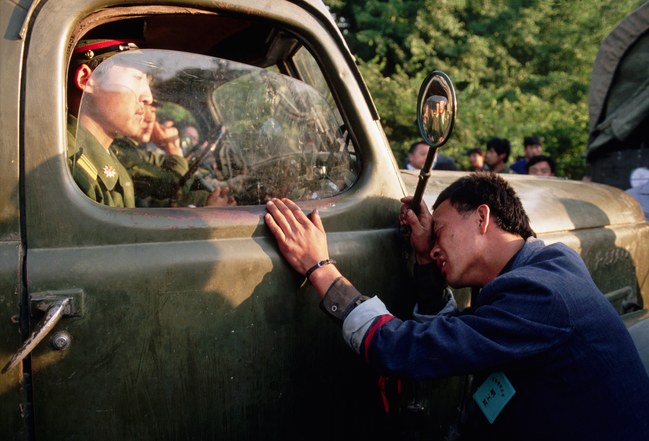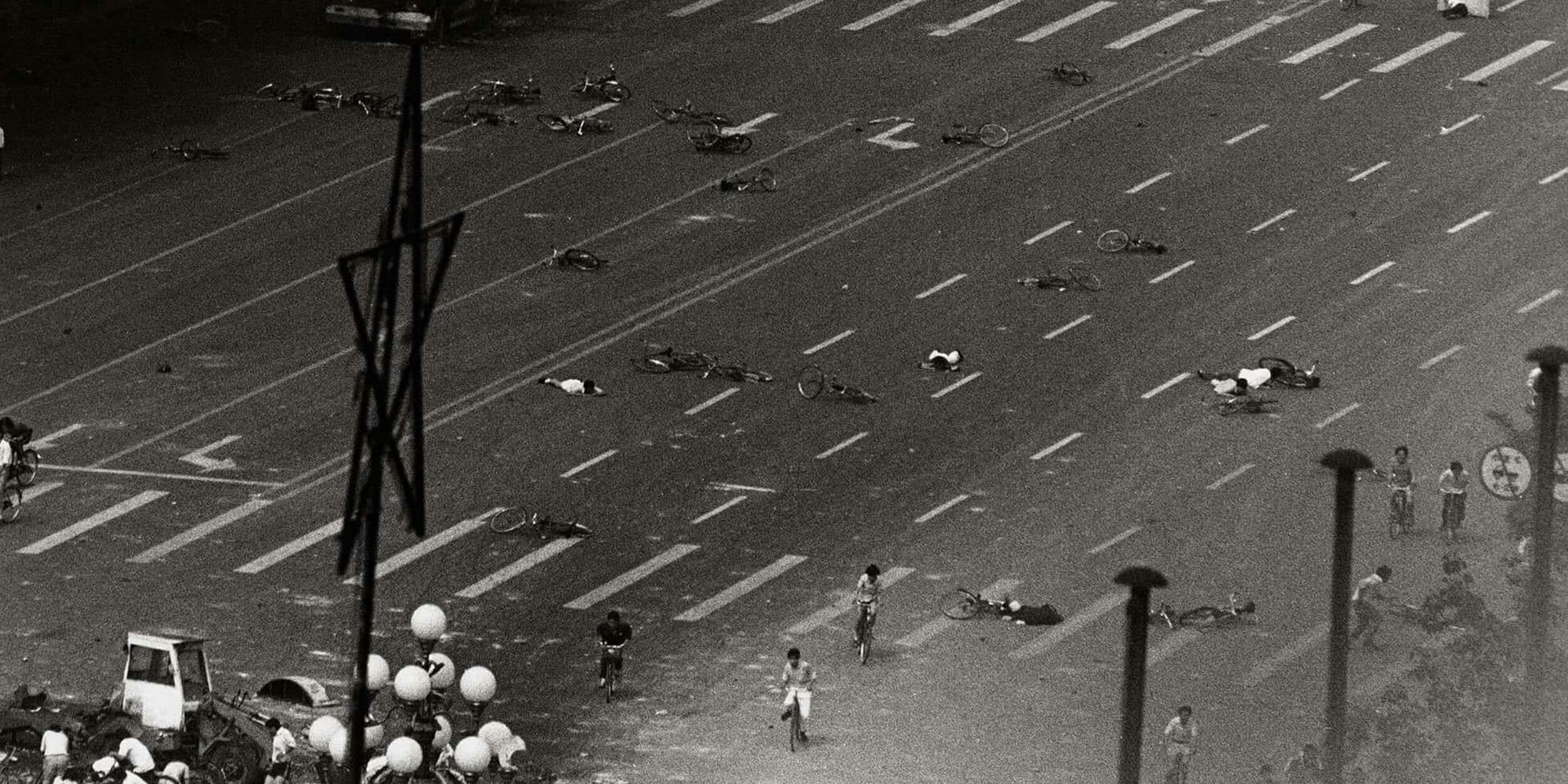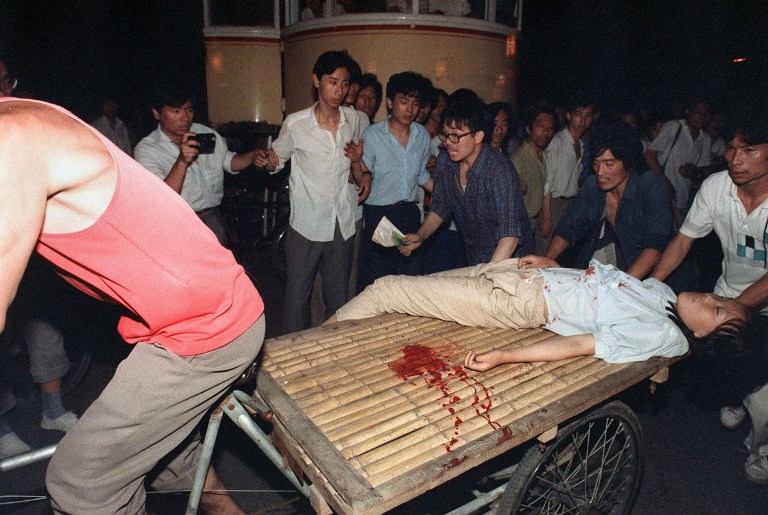
THE CHINESE COMMUNIST PARTY'S
DECISION


THE MASSACRE
Chinese soldiers attempting to remove civilians from Tiananmen Square. Source: The Washington Post

THE CHINESE COMMUNIST PARTY'S
DECISION
Soldier and protestor during the Tiananmen Square protests. Source: The New Yorker
AN END TO PROTESTS
Mikhail S. Gorbachev, leader of the U.S.S.R., planned to come to Beijing and meet with China regarding Communism. His upcoming arrival in mid-May of 1989 gave the government an intense internal struggle. They first requested the protestors to leave Tiananmen Square, but the students disagreed. Later, local police were called to Tiananmen Square but failed to stop the students. After the police were called and no progress could be made by the government, they held off any violence against the people. Two weeks later, the Chinese Communist Party had reached their limit and decided to call in the Army into Tiananmen Square to handle the protestors.
"The Chinese leadership hoped that the world would soon forget the Tiananmen Square massacre. Our job in Congress is to ensure that we never forget those who lost their lives in Tiananmen Square that day or the pro-democracy cause for which they fought."
- Tom Lantos
On June 4, 1989, the Tiananmen Square Protests became the Tiananmen Square Massacre. Soldiers rode in on tanks with ammunition and tear gas, shooting at anyone they could see. It didn’t matter if you were trying to leave the crowd; if a soldier saw you, it was over. People reported they saw elderly women with bloodied heads, cries while soldiers were beating people with batons, crushing anyone who was in the way of the Army’s tanks. Within a day, all the students’ progress seemed to be lost in a sea of bodies. Their weeks of hard work were erased as the Chinese government overpowered them once again.


Bodies and bikes litter the streets of Beijing after Tiananmen Square Massacre. Source: The Daily Dot
A young girl wounded and being carried away near Tiananmen Square. Source: Hong Kong Free Press
CREATOR
Erica Huynh